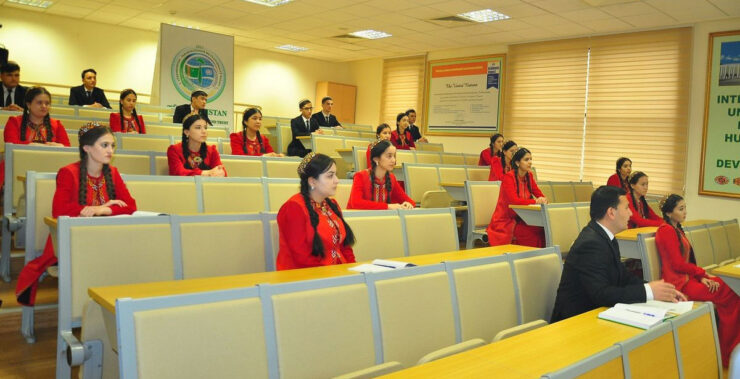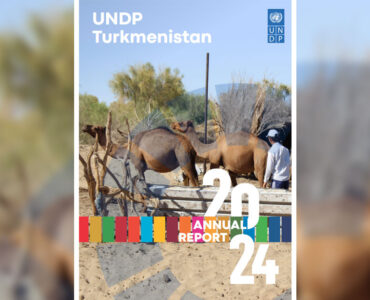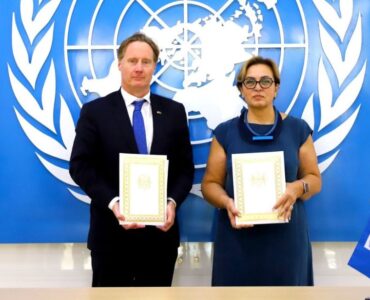The article, Transformations in Turkmen higher education: current opportunities and challenges at a new university, written in 2017 by Kelly Lee Gaynor, examines the history of higher education in Turkmenistan since its independence in 1991, and investigates the benefits and drawbacks of the education system in the country today.
History
After the Soviet Union fell apart in 1991, other Central Asian republics modeled their higher education systems after various international models. However, Turkmenistan took a different approach.
From the mid-1990s to mid-2000s, the number of years of study in secondary education was reduced from 10 to 9. Graduates could then continue to higher education.
In 2003–2007 only two years of attending higher education classes (plus two years of internship) were required for a Soviet-style five-year higher education degree of Specialist. While Kazakhstan and Kyrgyzstan ran two parallel systems of higher education, phasing out the Soviet model and replacing it with the Bologna conventions, Turkmenistan retained the specialist degree as the only degree available. For some time, this was the highest degree that could be awarded.
The policy of decreasing the number of years of study, under Saparmurat Niyazov’s presidency (1990–2006), was reversed after his sudden death. When Gurbanguly Berdymuhamedov came to power, an Era of Revival (2007–2012) was announced. However, this policy and other reforms still have lingering consequences, among them the lack of preparedness of current HEI (higher education) instructors.
Additionally, in 2004, foreign degrees were declared invalid, and so Turkmen youth who left the country to earn a degree could not use it back home. Also, unlike the other members of the Commonwealth of Independent States (CIS), ‘massification’ of higher education in Turkmenistan has not occurred: higher education remains an elite privilege, leading to a drop in enrollment since the 1990’s.
Basis for Turkmen Education
The system of education has been systematically overhauled towards goals of nation-building and the creation of national identity, especially through language policy. Knowledge of Turkmen has become a strictly enforced requirement in applying to HEIs, leading to a decline in Russian speakers.
Furthermore, from the early 2000s, Ruhnama, the two-volume Book of Soul, authored by Turkmenbashy, became the foundation of all knowledge at every level of education, and an ultimate goal of teaching and learning. This explains why students who study abroad are considered to lack the “necessary” knowledge for employment.
Reflecting the development of the system of education within a nation-building paradigm, the RT has adopted a dress code for both secondary and higher education. For girls this is a traditional/national Turkmen dress – in green for the secondary schools and in red for the HEIs. In addition, balancing the relationships of Turkmenistan’s major tribes and the economic and political power of the tribal elites has never been easy. Since independence, the elite of the Teke tribe have occupied the most influential positions, starting with the president. This affects university hierarchy as well. Rectors are appointed by the president, and tribal connections are involved in the hiring and promotion of faculty and administrators. There are also no private institutions, and most students don’t get charged for tuition.
Although the system of education in Turkmenistan remains inward-focused, it has embraced some elements of globalization. Increasing the number of years of secondary education to 12 years in 2013 put the RT ahead of many other states in the CIS. In higher education, Western degree structures like those institutionalized in the Bologna process have become part of the political discourse, although Turkmenistan is not a signatory of Bologna.
Today there are 19 HEIs in Turkmenistan – all but three are in Ashgabat, where an estimated 800,000 to 1,000,000 of the country’s 5.3 million people live. Turkmen State University (TSU) is the country’s oldest HEI, established in 1931 as a pedagogical institute. It was transformed into a university in 1950, and was the only university in Soviet Turkmenistan. It remains the largest, with the latest annual enrollment of 975 students. TSU has long been the leading and the most prestigious HEI in the republic. In the years of Turkmenbashy, however, Ruhnama came to dominate teaching, learning and academic research here. This is the number one department at the university.
The higher education landscape is based on the inherited Soviet structure and is easily recognized by those familiar with the higher education legacy of the former USSR, although very few of the younger faculty in Turkmen universities know this. One big difference is how comparatively small enrollments are here compared to HEIs in many other post-Soviet republics.
Overall
Under Gurbanguly Berdymuhamedov’s presidency, higher education experienced some reform, going through an Era of Revival. Student enrollment in universities has increased, although not to the level that it was under Soviet rule.
Student and professor morale is high, although bureaucracy is a prevalent obstacle. A further issue is the amount of time dedicated to various events and collective activities that are considered essential here in the process of upbringing, but often take place during the time when students are supposed to study academics – either in class or independently. So typical “extracurriculars” are really an integral part of the curriculum.
Faculty continue to push for the improvement of coursework and the overall system, but navigating bureaucracy is a difficult task. The question remains regarding whether or not reforms will continue to be made over the years.






